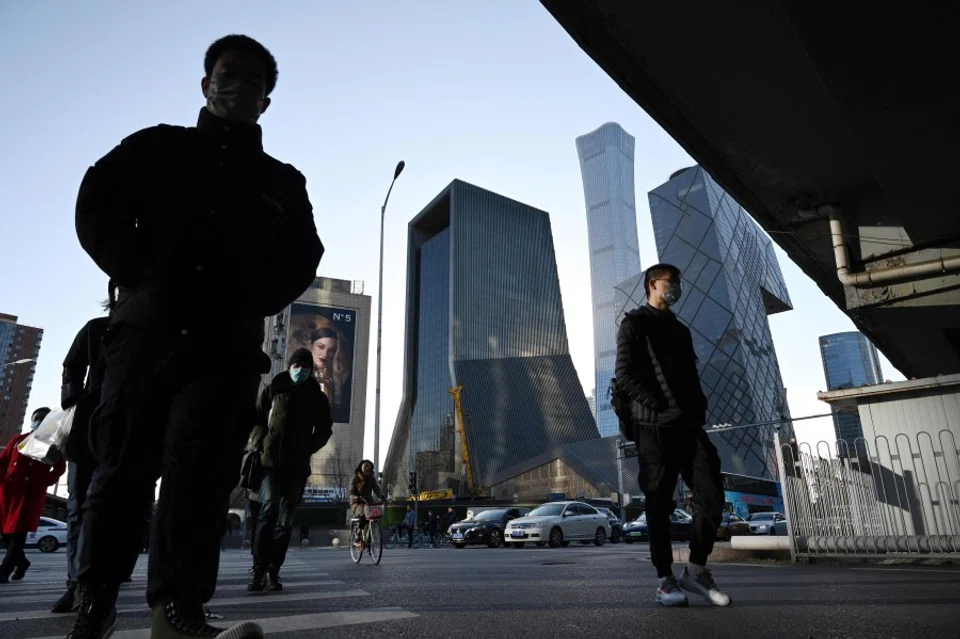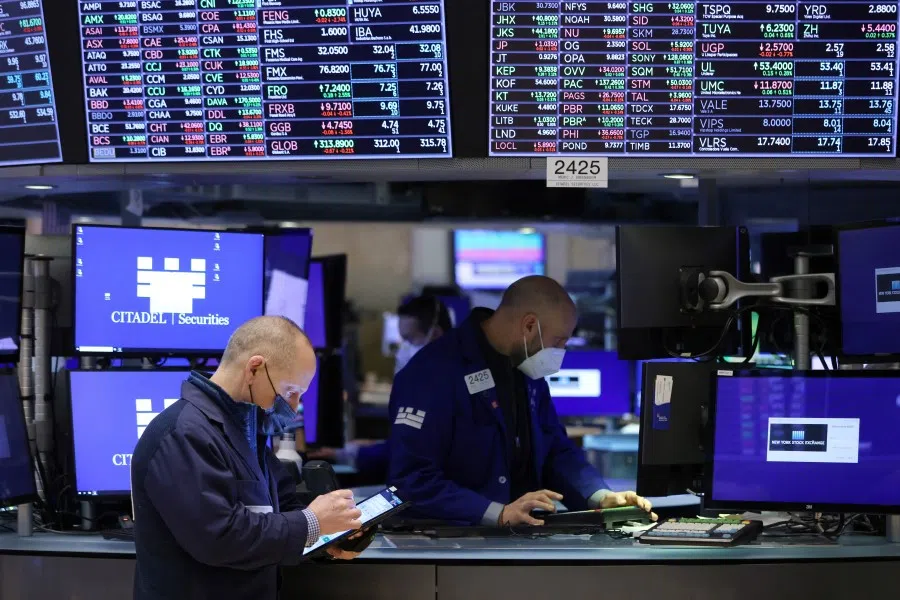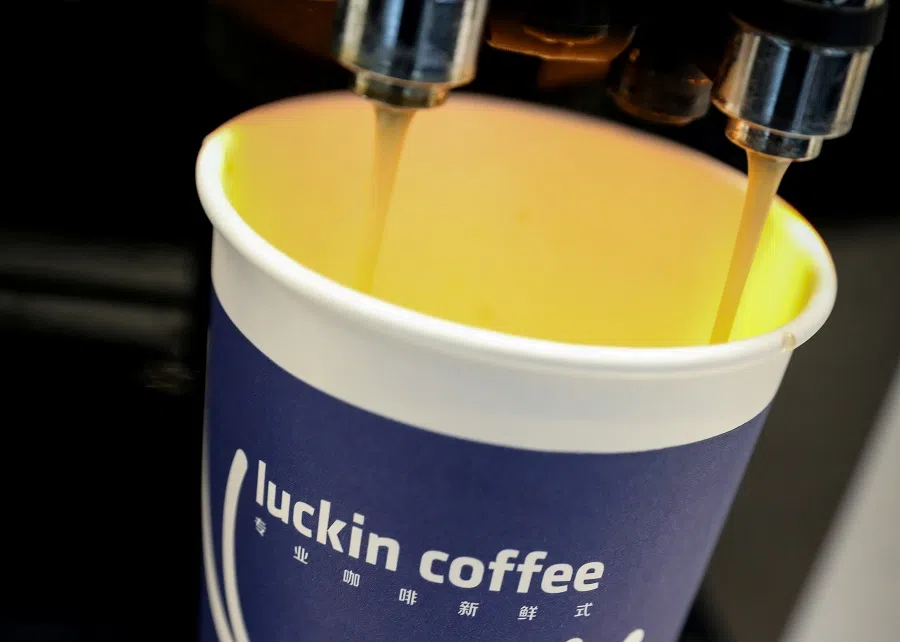New regulations to thwart Chinese companies' overseas listings?
New regulations announced by the Chinese authorities seem to have made it more complicated for Chinese companies to get listed overseas, even though the variable interest entity (VIE) structure is still in play. Given the added obstacles ahead, will Chinese companies still want to go through the trouble of seeking overseas listings? Zaobao correspondent Chen Jing reports.

Chinese companies planning to get listed overseas must have thought the onslaught of regulatory measures was done and dusted, but it turned out otherwise.
On 24 December 2021, the China Securities Regulatory Commission (CSRC) sought comments on a draft document on administrative measures for the filing of overseas securities offerings and listings. Under the proposed new rules, companies seeking overseas listings and additional share sales will be required to register with the CSRC. Companies whose overseas listing could pose a national security threat would also not be allowed to proceed. In addition, companies have to set up a strong system to prevent leaking of state secrets. If personal information and key data have to be provided overseas, it should be done in line with China's laws.
While the new rules look strict, the CSRC said that Chinese companies using the variable interest entity (VIE) structure will continue to be allowed to get listed overseas if they complied with domestic laws and regulations and completed their registration with the CSRC. This is reassuring for investors that were worried that China would block VIE companies from getting listed overseas.

This means total ownership for overseas investors would be capped at 30%, with a single investor holding no more than 10%.
Road to overseas listings paved with red tape
The VIE structure has been a frequent tool used by Chinese tech companies over the past 20 years to get listed in the US. Through this structure, a company is split into two entities, with the foreign offshore company being the overseas listed entity. That way, the company satisfies China's laws restricting investments in foreign companies, while receiving funds from international investors through the overseas listing.
The VIE structure has been used for sectors where overseas funding is not allowed, such as the internet, education, and culture and entertainment. But over the past six months, there has been occasional news that China's regulators have spotted this loophole and are considering drafting new regulations to stop tech companies from using the VIE structure to bypass regulatory checks and get listed.
But the market did not rejoice for long at indications that VIEs are still in play. The Negative List for Foreign Investment Access announced on 27 December 2021 by China's Ministry of Commerce (MOFCOM) and National Development and Reform Commission (NDRC) soon poured cold water on investors. This latest list says: "Domestic enterprises engaged in businesses in fields prohibited from investment mentioned in the Negative List for Foreign Investment Access shall be examined and approved by the relevant competent authorities of the state for issuing shares abroad and going public for trading; Overseas investors shall not participate in the operation and management of the enterprises." This means total ownership for overseas investors would be capped at 30%, with a single investor holding no more than 10%.
While the list does not mention variable interest entity (VIE), analysts read the new rules to mean that VIE companies will face stricter checks in getting listed overseas

While the list does not mention VIE, analysts read the new rules to mean that VIE companies will face stricter checks in getting listed overseas. They may have to go through the process of meeting the regulations from MOFCOM and NDRC, go through internet security checks, and then apply for approval according to the CSRC's registration process. This would make their route towards overseas funding longer and more complex.
...amid increasing geopolitical risks and policy uncertainties, an increasing number of Chinese concept stocks are returning from overseas markets.
Listed companies playing it safe by seeking secondary listings in Hong Kong
Over the years, companies operating within VIE structures have always been in a regulatory grey area. But after ride-hailing giant Didi (which went public via the VIE structure) stepped on data security red lines and was ordered to undergo a cybersecurity review, enterprises planning to follow the same route became concerned. In the latter half of 2021, numerous tech companies shelved their overseas listing plans one by one. Meanwhile, Didi announced in early December 2021 that it would delist from the New York Stock Exchange and prepare for a Hong Kong listing.
While the new regulations do not affect enterprises that are already listed overseas, amid increasing geopolitical risks and policy uncertainties, an increasing number of Chinese concept stocks are returning from overseas markets. In late December 2021, it was rumoured that Chinese Q&A site Zhihu, which had just been listed on the New York Stock Exchange in March 2021, was mulling over a secondary listing in Hong Kong and dismantling its VIE structure. Chinese retailer Miniso, which went public in the US in October 2020, is also said to be weighing a Hong Kong listing.

Chinese regulators have repeatedly stated that they have no wish to put obstacles in the way of Chinese companies going public. A CSRC official said that their intent was "not to tighten up regulatory policies for overseas listings" and the CSRC would not go against the trend of greater opening up. The MOFCOM and the NDRC also said that the new requirements would not affect the foreign ownership of companies already listed overseas, and they would continue to support law-abiding enterprises seeking to utilise both domestic and international financing resources.
Will Chinese firms still take the risk to go public overseas in the year ahead? Will a "domestic circulation" model of the stock market gradually take shape?
Further turbulence expected
These remarks show that regulators are not trying to keep out foreign capital in a one-size-fits-all manner, and reiterated the aim expressed by China's decision makers at the Central Economic Work Conference in December 2021 to set up a "traffic light" for capital. Amid the "triple pressures" of demand contraction, supply shocks and weakening expectations facing China in 2022, authorities need not put all their eggs in one basket and add another layer of risk to the already uncertain economic outlook. But with the long-term struggle between China and the US, it is undeniable that the financial markets of both countries are drifting apart.
On the other hand, Chinese concept stocks are also under pressure from US regulators. The US Securities and Exchange Commission (SEC) announced in early December 2021 that the Public Company Accounting Oversight Board (PCAOB) will be allowed to inspect the audits of foreign firms that list and trade in the US; these companies would be delisted from US exchanges if the PCAOB is not able to audit requested reports for three consecutive years. In late December 2021, the SEC also issued new disclosure guidelines requesting US-listed Chinese firms to disclose more information including the financial relationship between the VIE and the issuer, among others.

Apart from the regulatory storm, incidents such as Luckin Coffee's accounting fraud, Didi's IPO controversy and tumbling Chinese education stocks have dampened foreign investors' confidence in Chinese concept stocks. Since their US listings, Zhihu stocks have fallen by nearly 40%, while Miniso stocks have plummeted over 60%, which might actually prompt an early retreat from Wall Street. Compared with listing overseas, listing in the mainland or Hong Kong might give companies the advantage of reduced regulatory pressures and higher valuations.
Without a doubt, Chinese firms' door to listing overseas will not be shut in the short term, but it is already becoming harder to get in. Will Chinese firms still take the risk to go public overseas in the year ahead? Will a "domestic circulation" model of the stock market gradually take shape? After the dust settles, more questions are waiting to be answered.
Related: China's AI giant SenseTime blacklisted: Is China-US financial decoupling taking place? | Will China concept stocks pull out of the US completely? | Ride-hailing giant Didi slapped with Chinese cybersecurity review days after IPO | HK Stock Exchange to benefit from returning US-listed Chinese firms | New Beijing Stock Exchange will narrow economic gap between northern and southern China | Misbehaving US-listed Chinese enterprises and their gambler attitudes | If not the US, can the Chinese government provide better IPO choices for internet companies?


![[Big read] Paying for pleasure: Chinese women indulge in handsome male hosts](https://cassette.sphdigital.com.sg/image/thinkchina/c2cf352c4d2ed7e9531e3525a2bd965a52dc4e85ccc026bc16515baab02389ab)

![[Big read] Love is hard to find for millions of rural Chinese men](https://cassette.sphdigital.com.sg/image/thinkchina/16fb62fbcf055b710e38d7679f82264ad682ce8b45542008afeb14d369a94399)
